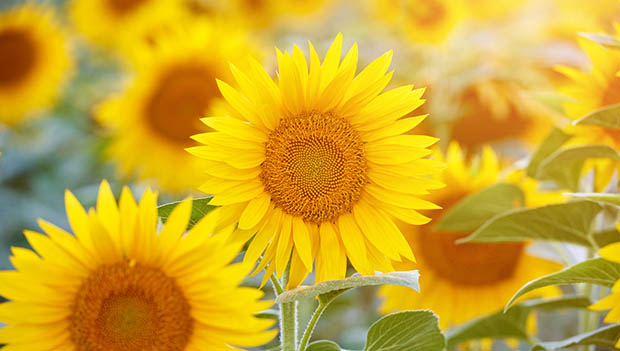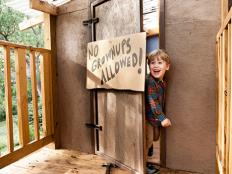
The main goal with any STEAM (science, technology, engineering, art and math) activity is to spark wonder, inquiry, creativity and most importantly, fun! In most cases, it's very much like play, and oftentimes it's hard to pin down whether an activity is more art, more science, more math, etc.—they blend together so well!
At the end of the day, it depends on what you choose to emphasize. The way colors mix on a canvas is explained by science, and the mess made after a classic baking soda and vinegar volcano explosion could be considered art. The beauty of these projects is that there is a playful element of choice for you and your child in the way you execute and explore each of these projects at home.
Science and art may be a bit notorious for the preparation and cleanup they often entail, but it doesn't have to be that way! When it comes to "easy" projects, the main two things we tried to keep in mind were minimal supplies and minimal steps. You're sure to find at least one project on this list that won't require a trip to the grocery or hardware store for supplies.
Shadow Tracing
If you're looking for a quiet, not-too-messy art/science project, shadow tracing is a perfect option! Tracing for little ones requires a lot of focus, and it helps them develop their fine motor skills and attention to detail. You can choose to set up outside as demonstrated here, where they chose to trace animal toys, or you can find a warm, sunny spot indoors as shown here in this Lego block-tracing activity.
Shadow activities are the perfect blend of art, science and play. By looking closely at shadows, another world is illuminated where your child can study the interactions and shapes of things. Depending on your resources, there are thousands of unique ways to decorate the shadows they draw, and to incorporate more math and science, bring out the measuring tools and do some comparisons!
While observing shadows is simple, the science uncovered in their study can be deep and broad—what creates a shadow and what doesn't? How do shadows look different in the morning versus high noon? Making these observations results in a study of material, time and space—how light behaves, how things move in the universe and what causes day and night. Encourage your child to ask and think about these aspects while they're creating their art piece/pieces, and see where their inquiry leads!
Fibonacci Art
Succulents, nautilus shells, sunflowers—there are endless examples of what is known as the Fibonacci number sequence in nature, and soon to be your fridge/art wall as well!
Helping your child understand the Fibonacci number sequence in its most basic form will help them understand numbers as symbols with meaning, addition and pattern recognition. To describe it simply, it's a sequence of numbers where each number is the sum of the two before it. An example would be: 0, 1, 1, 2, 3, 5, 8, 13 and so on.
In this art project by What Do We Do All Day?, you'll find a great deal more detail on the Fibonacci sequence and the steps necessary to help your kids build their own Fibonacci art with construction paper, a compass* to draw circles, a ruler to measure their diameter, scissors and glue.
*If you don't have a compass or a way to draw circles without tracing objects, try adding a "hunt" to the project! You can help your child measure the diameter of circular objects around the house in hopes to gather five to seven objects of increasing size matching a Fibonacci sequence. Sure, this adds an element of challenge, but you may be quite surprised at what you find!
Chain Reactions
A game of dominos at home has more-than-likely turned into standing and tumbling rows upon rows of ceramic game pieces. In many families that's the main role of a box of dominoes, they're blocks—forget the game! The engineering comes with the design perfected through trial, error, patience and a strong honing of fine motor skills. The science of the project lies in a simple study of forces and motion, energy and the concept of a "chain reaction."
If you don't have a box of dominoes (or if you're looking for a unique spin on the same activity), check out BabbleDabbleDo.com's concept and design of Stixplosions. All you'll need for this activity are popsicle sticks, rubber bands and some kind of small block/spacer. Once your child has the science of the basic build of this model down, there are tons of designs and options (outside of a straight line) that you can explore together.
Clean Mud/Soap Experiments
We've all seen slime and clay recipes, but have you ever heard of "clean mud?" The science behind this activity with ivory soap and water is easy, awe-inspiring and not too messy. In fact, the play and cleanup should leave things cleaner than they were to start. All you'll really need is ivory soap and a microwave!
The science behind the activity is similar to that behind putting a marshmallow in the microwave. As you heat the soap up, the small air pockets inside of the soap expand as the air inside them expands. You can help your child think about this concept by doing an additional quick experiment with balloons: Blow up and tie three different balloons to the same size, put one in the freezer and another in a bowl of warm water; after about 10 minutes, compare the size to one another. Providing evidence for another thing that expands when heated will help them explain the phenomenon of the "exploding" soap.
Why doesn't it happen with all soaps? Well, that relates to another experiment outlined in the same blog. Check it out!
Homemade Spectroscope
You may have had some fun playing with how light interacts with objects to make shadows, but what about rainbows? What is light made of? A great way to explore these questions is by looking through a spectroscope. This may sound like a fancy, expensive tool, but it's really quite a simple design. You and your child can make one at home with a few simple tools: a paper towel roll, a CD, paper and tape.
Once you have your spectroscope built, the real wonder will come from looking at different light sources through the scope. Most white light sources will have minor differences that will be difficult to note, but encourage them to write down and color what they see. White light is made up of all of the colors, and your spectroscope will separate light into the colors that it is made of. Some more unique observations can be made looking at colored bulbs and neon lights!
Your child will enjoy knowing that a spectroscope is a tool that scientists have used for years to better understand the stars in our universe by looking closely at the unique "rainbow" of light they each give off.
READ THIS NEXT: Fun At-Home STEAM Projects









Discuss This Article